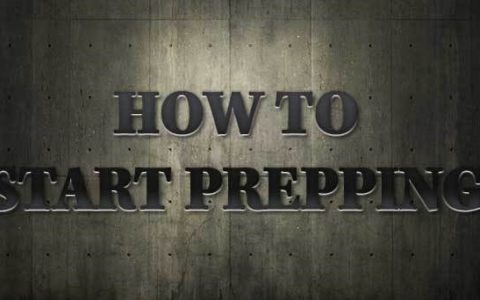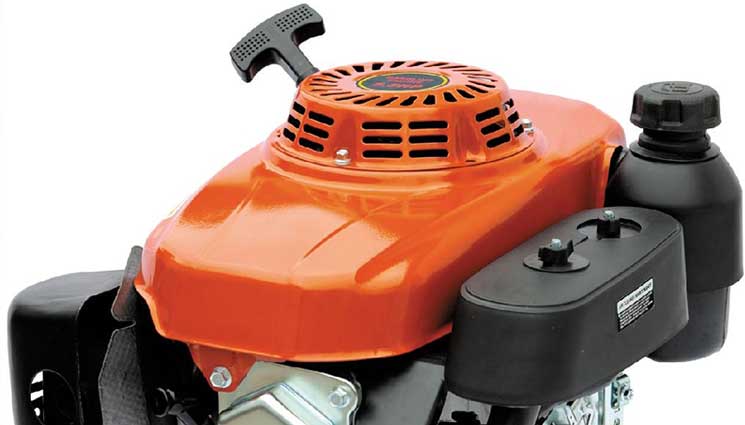
What Are Your Bug Out Triggers?
What conditions would have to exist for you to decide that you had to abandon your home; that remaining there had become more dangerous than bugging out into a world that has gone sideways (at least in the corner of it that you can observe)? Some natural events are pretty easy to visualize, such as hurricanes, tsunamis and out of control wildfires. But these are actually localized evacuations and not ‘bug-outs.’ In these events, you can reasonably expect that first responder will flow into your area quickly. They will be followed by state and federal agencies with varying degrees of timeliness and effectiveness. Disaster relief funding will be appropriated, insurance companies will write you a check to repair or rebuild and, eventually, you will be able to move back into your property. In other words, the massive infrastructures of local, state and federal governments will have continued to function throughout the disaster. All’s well that ends well, right?
But, what if there weren’t going to be any first responders? What if state and federal governments were overwhelmed by the scale of the disaster, or if they effectively ceased to exist at the very moment of the event? In some SHTF scenarios, those conditions might prevail and you simply haven’t learned of it yet. So, here you are in your dark home, with no water. You’ve burned the last chair from your dining room set to keep warm and you haven’t seen any neighbors for more than two weeks. Maybe it’s time to go, but you aren’t really sure.
If you find it difficult to articulate the conditions under which you would be willing to bug out, you aren’t alone. That difficulty is compounded by generally vague SHTF/TEOTWAWKI scenarios and a lack of meaningful decision trigger points. What are the differences between an inconvenient, undesirable situation and one that has become intolerable and possibly life-threatening? Can you make such a decision with the full knowledge that no “mulligan” will be issued if you get it wrong, that once you step outside the door of your home, it may be for the last time?
For purposes of this discussion, I make the following important distinctions between evacuation and bugging out:
- An evacuation is accompanied with the reasonable expectation that you will be able to return to your residence in the foreseeable future. It means not only that you are leaving a place under imminent threat, but that you are evacuating to a known place of safety where aid can be provided by a still-functioning government or the charity of others. An evacuation means that rule of law and its consequences continue to apply across the entire spectrum of society and that there has been no suspension of Constitutional rights. Your primary concern may be as simple as finding a motel that hasn’t turned on its “No Vacancy” sign.
- Bugging out means that you have no reasonable expectation of returning. It means that sheltering in place in a post-SHTF environment has failed as a strategy and has become more dangerous to your survival than bugging out. Rule of law may no longer be respected or enforceable. It also means that no one can guarantee a safe route of passage or a safe destination. Finally, it means that you have no guarantee of receiving aid; that acquiring essential food, water, shelter, and security are entirely dependent upon your ability. In other words, you are on your own.
With two exceptions (#22 and #23), all of the questions that follow are independent of any specific type of SHTF event. Instead, they deal with conditions and information that will help determine whether or when you need to bug out. The list is by no means complete; you are welcome to add questions that pertain more directly to your own environment. Rather than treat them with simple yes or no answers, consider the degrees of risk that may develop as time progresses. As you work through the list it will become evident that answers to multiple questions can lead to a more complete understanding of your situation and the world around you. Having many data points is more reliable than basing a decision on a single piece of potentially flawed information.
The questions deal with specific aspects of public safety, public or government infrastructure, your own resources, or conditions in your immediate area or region. There are no redundant questions. For reasons that should be obvious, this article assumes that you have already made some level of preparation to bug out.
(1) Can you defend your home?
- Understanding the defensive limitations of your home and property should be the prime factor in determining whether and when to bug out before it ever becomes necessary to do so. The stark reality is that the vast majority of residences are not designed or constructed for defense. Windows, sliding glass doors and wood or stucco exteriors will not stop a bullet or a determined intruder, and some calibers can penetrate cement block walls. In the typical suburban setting, with small property lots and walled in back yards, the defensive field of view is extremely limited. Without some form of perimeter security, you may face the prospect of repelling armed looters that have already entered your home.
- Can you maintain a visual awareness of approaching threats around the clock? Can you maintain this level of awareness for days or weeks?
- Is your concept of defense dependent upon distance? In other words, can you tolerate a potential threat that is 1 mile or only 200 yards away? What if there is an existential threat standing on the other side of your front door?
- Objectively accessing your ability to stop looters outside your residence is a paramount consideration, regardless of how defensible you think the interior may be. Importantly, ask yourself if you would be able to prevent or defend against simultaneous entries from multiple points in your house. A low probability of success (intrusion prevention) is an obvious red flag. That doesn’t mean it will happen, but if you do not believe that you can prevent entry from multiple points without endangering your family or yourself, then you must conclude that your home is not defensible. If the answer is “no,” the issue now becomes whether you are willing to gamble on the outcome. Simply stated, if your home is not defensible and other factors (below) indicate an increased risk over time, you must at least consider bugging out for your own safety.
Does your disaster preparation plan include security measures?
- Another aspect of home defensibility pertains to fire. Are trees or native brush located near the structures on your property? Do you have a defensive (fuel-free) space that would prevent an uncontrolled fire from destroying your home? Could you suppress a fire without the aid of the fire department? Before you answer “yes” to this question, could you do it if there was no water?
(2) How long have you been bunkered in your residence?
- The longer you remain in place the less likely you are to be factually aware of the situation unfolding around you. This is particularly true if you cannot obtain information from news networks, local radio stations, etc. Events and threats can develop rapidly. The absence of timely eye-witness or other authoritative information can mean that you are in the path of increasing danger and don’t know it.
- The assurance of continued safety may require that you reconnoiter your area on a regular basis to assess current conditions. Speak with as many people as you can (safely), but you must also evaluate the other questions on this list.
- If possible, set up a regular time each day to meet with neighbors to share information.

(3) Has your neighborhood been forced to erect barricades?
- The erection of barricades across streets leading into your neighborhood may be a preemptory defensive measure to a perceived threat, or it could be in response to an active threat. You will need to determine which situation pertains.
- If conditions are such that barricades are deemed necessary by local residents, you must at least consider that the risk to personal safety has increased to a level that warrants consideration of bugging out. In other words, if barricades are necessary, but become ineffective, your zone of safety will be greatly diminished,
(4) Are you counting on neighbors for your own security?
- Is your strategy for sheltering in place dependent upon the cooperation of neighbors to maintain a degree of safety?
- Do you consider that your neighbors are able (equipped, competent and physically capable) to contribute to your security?
- Have you exchanged commitments (a mutual defense pact of sorts) regarding area security? Is it based upon a perceived threat level or the passage of time? In other words, does the pact hold as long as the threat is minimal? Have neighbors (or you) committed to remain in place for a limited time, such as one more week, or are you/they hanging in on a day-to-day or hour by hour basis?
- Are you confident that you can patrol your neighborhood without being shot by a local resident? Think about that for a moment. How do you intend to reconnoiter your neighborhood if you have no means of communicating with each other?
(5) Have your neighbors abandoned their homes? Has your security situation improved or worsened since they left?
- After the event that caused you to shelter in place, have you seen neighbors generally packing up to leave?
- Have neighbors (that you were counting on for mutual defense) started leaving their homes?
- Has your ability to protect your residence been degraded by the departure of others?
- A sharp decline of residents in any neighborhood effectively isolates those who stay. Remaining residents are surrounded by unoccupied structures and will be unable to prevent looting and arson. In such a case it may be beneficial for remaining residents to relocate into adjacent houses where they can maintain close communication and concentrate their defenses.
(6) Are you willing and prepared to salvage supplies from residences in your area?
- If you are determined to shelter in place for an extended period of time you will inevitably need something that you do not presently have or that you have run out of. The list of potential items is virtually endless, yet you may be surrounded by homes that were hastily abandoned – possessions whose owner/occupants will never reclaim. You are faced with a choice: You can inventory and salvage useful items, or you can sit back and wait for looters and scavengers to take them. Either way, it is merely a matter of time before your neighborhood will be cleaned out of anything that is useful, that may extend your life or improve your safety.
- I am not advocating theft or looting. I’m talking about a world that has gone sideways; a world where rule of law has largely collapsed; where the government has ceased to function; where even the declaration of martial law has no effect on the behavior of people.
- If you are unwilling to salvage abandoned material, you may be hastening the day when bugging out is the only course of action remaining to you. Importantly, you will still be without the items that you needed.

(7) When is the last time you saw or spoke with anyone outside your own dwelling?
- Let’s look at an extreme hypothetical situation where you have been bunkered for two months in a typical suburban environment. There was an initial chaotic period where neighbors were fleeing their homes and large numbers of refugees were streaming through your area. Those numbers declined after a week but were replaced by looters and scavengers during the next four weeks. None of your neighbors have returned and no refugees have moved into vacant structures. You have now been in place for two months and you haven’t seen a single soul in the past three weeks.
- Does this mean that you’ve weathered the worst of the post-SHTF event, that you are safe? Hardly. This scenario brings us squarely to the issues of situational awareness and your sense of timing. Your decision to shelter in place means that you were neither ahead of nor in the middle of the golden hoard. They left you behind a long time ago.
- Except for what you have been able to salvage or scavenge for yourself, every business and dwelling place may have been picked clean for miles in every direction. There is still no potable water, gasoline, propane, packaged food, seeds, protein on the hoof or medicines that you can find.
- At some point you have to confront the concept of what it would mean to be totally alone; without the possibility of immediate or future aid. Now what? Do you have an objective reason to think that your original bug out destination is still a viable option?
(8) Have you seen or been forced to repel looters?
- Many major metropolitan areas provide information about the location of criminal activity via web sites. It is fairly easy to identify high crime zones, as well as the general nature of the activity (burglary, assault, homicide, etc.) by looking at an interactive map.
- What distance is your home from these chronic hot spots? Are there convenient routes that would enable riots and looting to spread toward your residence if law enforcement was unable to control or contain it? How much time would it take for looters to reach your neighborhood?
- In the absence of public communication, you may have no knowledge of the proximity of looters to your residence. Realistically, whatever that time frame is, you have far less time to decide whether to bunker down or bug out.
- Once looters enter your neighborhood your margin of safety could shrink to near zero.

(9) How long has it been since the electrical grid went down?
- Local weather events and even accidents can cause power outages lasting from a few minutes to a few days, but people still go to work and shop in areas where power is available. Utility crews show up with chain saws, electrical cable, poles, and transformers. Long duration outages (greater than three days) could indicate a problem that is far more widespread than your immediate locality.
- From almost any high point you should be able to spot the sky glow from city lights reflecting off cloud cover at night. I can see the night glow from cities 70 miles south and 50 miles north of my location. If you are unable to see city lights in any direction, the event that caused your outage may be at least regional in scale.
- The key to this issue is not the outage itself, but whether the resources (manpower and replacement gear) exist to recover from it in a time-frame that enables you to remain in your residence. Without electricity, the infrastructures that provide gasoline, natural gas, public communications, and water will be inoperable. At some point, you will begin to use and deplete irreplaceable emergency supplies that you have stored in your home.
(10) How long have you been without a source of water?
- The delivery of urban water depends upon electric pumps, purification plants, and large capacity storage tanks to maintain pressure. Without electricity, water will cease to flow.
- Here is a straightforward equation: S–C=R. If you started this event with a five-day supply of water (S) and it has been five days since water stopped flowing from your tap, then you have consumed (C) all that you had stored at the end of the 5th You now have zero days of water remaining (R). Conservation of your dwindling supply is irrelevant if there are no prospects that water will begin to flow from the tap. Without the ability to replenish potable water stocks, continued occupation of your residence will become untenable. If you have no source of water, neither will anyone else in your immediate area.
(11) Are you running low on your bug out supplies of food and water?
- When the taps went dry, how much potable water did you have on hand (measured in days of supply) for the number of people in your residence, including water needed for food preparation and toilets?
- Including cooked or uncooked foods that were refrigerated or frozen before the power grid went down, how many meals do you have available for the number of people in your residence?
- Assuming that you have a bug out plan, how much of that food and water will be needed to reach your destination once you abandon your residence? Once you begin depleting your bug out resources, you will effectively be reducing your range of travel; possibly without the ability to replenish supplies along the way.
(12) Are grocery stores, gas stations, pharmacies and banks in your area open for business?
- Have you ever experienced panic buying situations where shoppers strip food aisles in the face of an oncoming winter storm? There is no reason to think that a SHTF situation would not produce the same or worse behaviors, but of a greater magnitude.
- If the situation is accompanied by large-scale power outages of long duration, modern commerce will effectively cease. To the extent that any purchases are possible, they will be strictly cash and carry; but the conventional sources of cash (banks) will be closed. It will not matter how much you have in your checking or savings account; you will not be able to access it or convert it to a usable form.
- For anyone that is sheltering in place under such conditions, the cash and supplies that you have on hand are all that you are likely to have for the foreseeable future. Given those circumstances, you must determine when bugging out will become necessary. The key question is whether you intend to be in front of or behind the Golden Horde.
(13) Has home delivery ceased?
- At minimum, there are three organizations that make regular deliveries to your home or neighborhood and they are ubiquitous throughout the country: USPS mail carriers, FedEx and UPS vans. And, unless you haul your own trash, the local sanitation department will make weekly or semi-weekly stops to empty the dumpsters that you place on the curb.
- If all of these services have ceased it could be that your area is no longer considered safe for employees to enter. This could be a localized or temporary issue, in which case there will be other indicators to help with your assessment of risk.
- The absence of mail and package delivery may also be caused by other factors, such as the collapse of regional or national logistics systems that rely on air and ground transportation, massive sorting centers and, of course, data processing and communications.
- A build-up of trash at your residence (while other houses have none) will indicate that it is still occupied, that you are sheltering in place, and that you have some level of resources, such as food and water. Can you conceal or bury trash while sheltering place?
(14) Have you seen any long-haul freight carriers operating on highways?
- Freight transporters cannot function without fuel, communications, and logistics. If tractor-trailer rigs aren’t moving in and out of depots, are piling up at truck stops or are sitting on the side of the road, there has been a major breakdown in the transport/supply system.
- Many businesses rely on “just in time” delivery for merchandise, including food, by using real-time inventory control systems and automatic low order restocking points. If the order cannot be fulfilled, if the distribution center cannot load freight onto a truck, or if the truck cannot roll, the supply line will back up – but not at your merchant’s back door. The material will be stuck in distribution centers, at the producer’s plant, or may be rotting in a farm field. Consequently, supply chains will quickly fail.
- Looting and other forms of civil disorder are likely to occur within hours and could quickly become widespread. Initial looting targets are almost always retail stores. The next likely targets would be distribution centers and other types of supply warehouses. Common sense suggests that freight haulers will not enter areas where civil disturbances are uncontrolled.
In Part 2, we will examine the remaining questions that you should evaluate when before making a decision to bug out.























